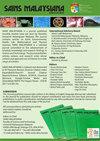东海西湖凹陷始新世平湖地层油气分布特征及油气富集控制因素
IF 0.7
4区 综合性期刊
Q3 MULTIDISCIPLINARY SCIENCES
引用次数: 0
摘要
东海大陆架的西湖凹陷是一个具有良好勘探潜力的含油气盆地。始新世平湖地层作为盆地内重要的含油气地层,已成为近期油气勘探目标。然而,专门研究孔雀亭地区油气分布特征和储层控制因素的研究仍然有限。缺乏深入的油气聚集模型研究制约了后续勘探工作的开展。本文基于钻井、三维地震、测井和地球化学分析等资料,发现孔雀亭地区平湖地层中广泛存在煤层相关烃源岩。这些源岩为储层提供了良好的近源和远源烃类供应。河砂横向相连,纵向叠加,形成 "横向演替,纵向叠加 "的格局,表明储层质量良好。在平湖地层沉积时期,两组大型区域盖岩(P3 和 P7)是极好的封存岩。砂质储层与页岩层互层,形成米勒-费厄尔式储层-封隔对。盆地形成初期形成的断层是碳氢化合物迁移的通道,制约着含碳氢化合物地层的空间分布和碳氢化合物的聚集类型。这些断层有助于形成大面积的油气聚集区。本文在孔雀亭地区建立了一个油气聚集模型,其特点是 "源头双烃供,上层油,下层气,储层密封性好,油气通过断层导管迁移"。本文章由计算机程序翻译,如有差异,请以英文原文为准。
Characteristics of Oil and Gas Distribution and Controlling Factors of Hydrocarbon Accumulations in the Eocene Pinghu Formation of the Xihu Depression, East China Sea
The Xihu Depression at the shelf of the East China Sea is a petroliferous basin with excellent exploration potential. The Eocene Pinghu Formation has become a recent oil and gas exploration target and as the critical hydrocarbon-bearing stratigraphic layer in the basin. However, studies specifically examining the characteristics of hydrocarbon distribution and the controlling factors of reservoirs in the Kongqueting area remain limited. The lack of in-depth hydrocarbon accumulation model research restricts subsequent exploration. In this paper, based on data from drilling, 3D seismic, well test, and geochemical analysis, we found that coal bed-related hydrocarbon source rocks were widely occurred in the Pinghu Formation in the Kongqueting area. The source rocks provide good hydrocarbon supply of near-source and distant-source to reservoir. The river sands were connected laterally and stacked vertically, forming a pattern characterized by ‘lateral succession and vertical superposition’ indicative of good quality of reservoir. During the deposition period of the Pinghu Formation, two large sets of regional cap rock (P3 and P7) were excellent sealing rock. The sand reservoir was interbedded with shale layers, forming a Mille-feuille type of reservoir-seal pair. Faults formed at the early stage of the formation of basin serve as conduits for hydrocarbon migration, governing both the spatial distribution of hydrocarbon-bearing strata and the types of hydrocarbon accumulations. These faults were instrumental in facilitating the formation of extensive oil and gas accumulations. This paper establishes a hydrocarbon accumulation model in the Kongqueting area, characterized as ‘dual hydrocarbon supply from source, upper oil, and lower gas, good reservoir-seal pair, hydrocarbon migration through fault conduit’.
求助全文
通过发布文献求助,成功后即可免费获取论文全文。
去求助
来源期刊

Sains Malaysiana
MULTIDISCIPLINARY SCIENCES-
CiteScore
1.60
自引率
12.50%
发文量
196
审稿时长
3-6 weeks
期刊介绍:
Sains Malaysiana is a refereed journal committed to the advancement of scholarly knowledge and research findings of the several branches of science and technology. It contains articles on Earth Sciences, Health Sciences, Life Sciences, Mathematical Sciences and Physical Sciences. The journal publishes articles, reviews, and research notes whose content and approach are of interest to a wide range of scholars. Sains Malaysiana is published by the UKM Press an its autonomous Editorial Board are drawn from the Faculty of Science and Technology, Universiti Kebangsaan Malaysia. In addition, distinguished scholars from local and foreign universities are appointed to serve as advisory board members and referees.
 求助内容:
求助内容: 应助结果提醒方式:
应助结果提醒方式:


